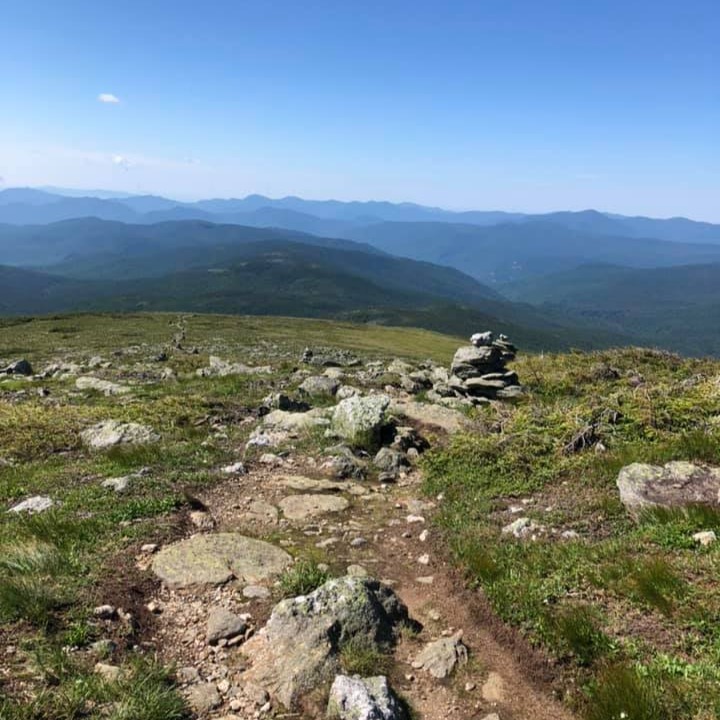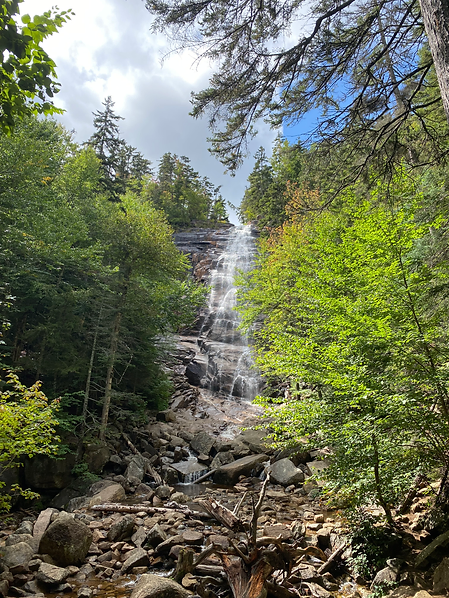

It’s hard to summarize hiking better than America's most famous conservationist, John Muir. “In every walk with nature, one receives far more than he seeks,” wrote Muir. He likely recalled days spent in California among towering redwoods or the stunning granite cliffs of the Yosemite Valley. Yet, he understood that regardless of the view, wild is wonderful.
Exploring wilderness areas on the east coast is equally breathtaking. Natural spaces, like the White Mountains, provide context to humans' role in the greater ecosystem. As Muir said, we reap incredible benefits from nature. And while there’s no single, correct way to enjoy a hike–there are a few wrong ways. So save yourself some on-trail embarrassment by following this list of things not to do on a hike.
Assessing the parking area is the first rule to follow when deciding if you should stick with your plan or move on to another trailhead. It’s safe to assume the trail is crowded if the parking lot or roadside pull-off is full. Sometimes you can safely park further away and hike into the trailhead, but often, it’s best to pick a different trail. Trying to squeeze your car into a crowded parking lot may mean you’ll disrupt traffic flow or make it difficult for another hiker to leave their parking spot.
If you want to hike on a popular trail, plan to arrive early or late in the day or hike in the off-season. Always have a backup plan if your first choice is too crowded to park safely and hike.
The occasional school outing with two dozen students and chaperones is bound to happen. But, if you can help it, avoid hiking in groups larger than ten people. Large groups often lead to more damage on fragile trails and make it hard for other hikers to safely and easily pass by. Hiking in a large group also creates more noise (see our next point for more about this). If you are part of a larger outing, separate into smaller groups for the sake of the trails. Give each part of your smaller groups at least 500’ of separation so it's easier for faster hikers or smaller groups to pass you. On a single-track trail, rest on durable surfaces instead of moving out of the way by stepping on vegetation.
We’re sure you have great taste in music, but it doesn’t belong on the trail. Even if you aren’t hiking to escape the noise of society, many hikers prefer a quiet trail. Since trails are shared spaces, it’s best practice to save that playlist for the drive to and from the trailhead. And don’t worry, we’re all huffing and puffing, so we can’t hear your heavy breathing over our own.
In addition to creating human-to-human tension on the trail, playing music or loud conversations from large groups impacts wildlife. Your hike may only last an hour or two, but the trail passes through the territory of hundreds of wild animals. Some may be hiding out nearby until you pass through. Too much foreign noise on the trail puts undue stress on wildlife in the area.
One of the fun parts of hiking is enjoying a snack in nature—Alfresco, as the Italians say. But leaving trash on the trail hurts other users and wildlife. If you managed to carry in that granola bar wrapper, Ziploc bag of grapes, or can of beer (we see you, trail partiers), then we’re confident you’re strong enough to carry it out when it’s empty. Your mom will not hike out there later to clean up after you (or at least she shouldn’t have to!). So do your part to keep the trail as beautiful as it was when you hiked.
For the people in the back–moving naturally occurring things that aren’t blocking access to the trail is never a good move. Nature is perfectly perfect without that rock tower in the middle of the creek or a stick tee-pee next to the rock your family used as a snack-break-bench.
When you wander off-trail to collect bits of nature, it damages that trail's ecosystem. Hundreds of micro and macro-invertebrates live under rocks in the stream and on decaying branches on the banks. Moving their home could kill them and disturb their vital role in keeping the stream healthy or breaking down fallen limbs. Without those silent doers, the world would be knee-deep in horizontal trees, branches, and brown leaves.
Don’t get us wrong. We love dogs. And we know dogs love hiking. But we know not everyone loves dogs and that dogs don’t understand how important it is to stay on the trail and respect the local ecosystem. That’s why it’s best practice to keep your dog leashed when hiking. Some trails require dogs to be leashed, while others are off-leash friendly. If you’re dog averse, know before you go. If you’re bringing your four-legged friend on your hike, be respectful of other hikers and use a leash.
Bonus tip: clean up after your pup. Despite what you think may happen to your dog’s waste when you walk away from it, dog poop can take years to decompose fully and can spread non-native diseases to nearby wildlife. But we know poop is gross, so we love using these when we’re hiking with our trail dogs. You’re welcome.



Guineafowl Adventure Company provides full-service, turnkey guided day hikes in the White Mountains and beyond for people of all abilities and experience levels. We take care of all the planning and preparation for hiking and provide round-trip transportation from the Greater Boston area, day packs with hydration and snacks, safety and convenience items, and friendly, knowledgeable, and experienced guides to lead the way!
Guineafowl's mission is to remove the barriers and obstacles that keep people from exploring nature, so they can feel comfortable, safe, and relaxed while experiencing the physical and mental health benefits of hiking and connecting with nature.
Visit our website to schedule your guided hike or contact us to book a private excursion.